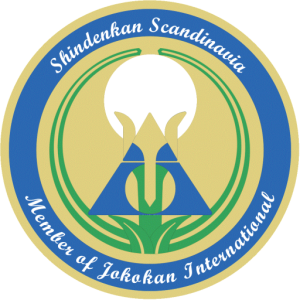By Oliver V. Bagersted, Member until 2015
Hsingi 1 part b.
This course was probably a little more what we expected Hsingi to be. The first part had been very much based on points to hit and correct base and the essentials to be able to generate power. Hsingi 1 part B of course had the same aspects as part A, but this time we worked much more with the 3 focal points. Kimu sensei explained that there are 3 important focal points in Hsingi. These 3 focal points are:
- Power
- Velocity
- Precision
The 3 things are the most important in Hsingi. In other words, the things we must try to live by as well as possible.... Which is extremely difficult.
Having to put these things together in a 100% attack is difficult enough in itself. But in addition to having to do it against a moving object seems almost impossible to do correctly.
The task was; Full power on the pillow, zenkutsu-dachi with oi-tsuki.
To begin with, the pad was still, so the barrier to be crossed was to break through to a good training partner/friend.
The challenge developed over the hours, first oi-tsuki, then gyaku-tsuki. Next, from kokutsu-dachi we had to take a step forward and hit oi- and gyaku-tsuki respectively. We didn't use anything else, these 2 positions and techniques were the only ones we used.
As before, power, speed and precision were the focus. But it was (is) difficult to get into gear. Kimu sensei also stopped us after 1.5 hours and asked why it was necessary for us to spend 1.5 hours to be able to attack at full power. Unfortunately, the fact that it was Friday and had been a hard week cannot be excused. Because it has been said before, we also often hear it for brown belt training, that we must be on. So this suggests that we generally need to improve our approach.
Out of the 4 techniques we had used, we had to assess in groups which one we thought was the most optimal. The majority of the groups decided kokutsu-dachi with gyaku-tsuki. For some reason, most of us found it easiest to attack with a step rather than a full step.
However, we were told that there should be no difference. Technically, they should be equally difficult (equally easy) to perform.
Lastly, Kimu sensei showed how by using a step before the step you can cover a much greater distance. So the two movement techniques combined (the movement pattern just like in ken and kotachi kumite).
This in no way made the 3 focus points easier, but it did start a lot of thinking about how to improve your attacks.
I am amazed again and again by this system and how between each and every competence there is a connection. Hsingi was said to be derived from yari (spear), which is related to Jo, which in turn can be related to ken and kotachi. Of course, Hsingi is also obvious to bring into the system, as it is power generation. But I just didn't think it would have such a big connection with the other skills.
So what I have learned so far from the Hsingi courses is:
- Hold/Conquer the center
- The center is essential for making a powerful stroke.
- A strike at close range depends on power, speed and precision.
- Step by step to get closer to the opponent.




